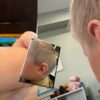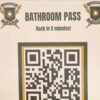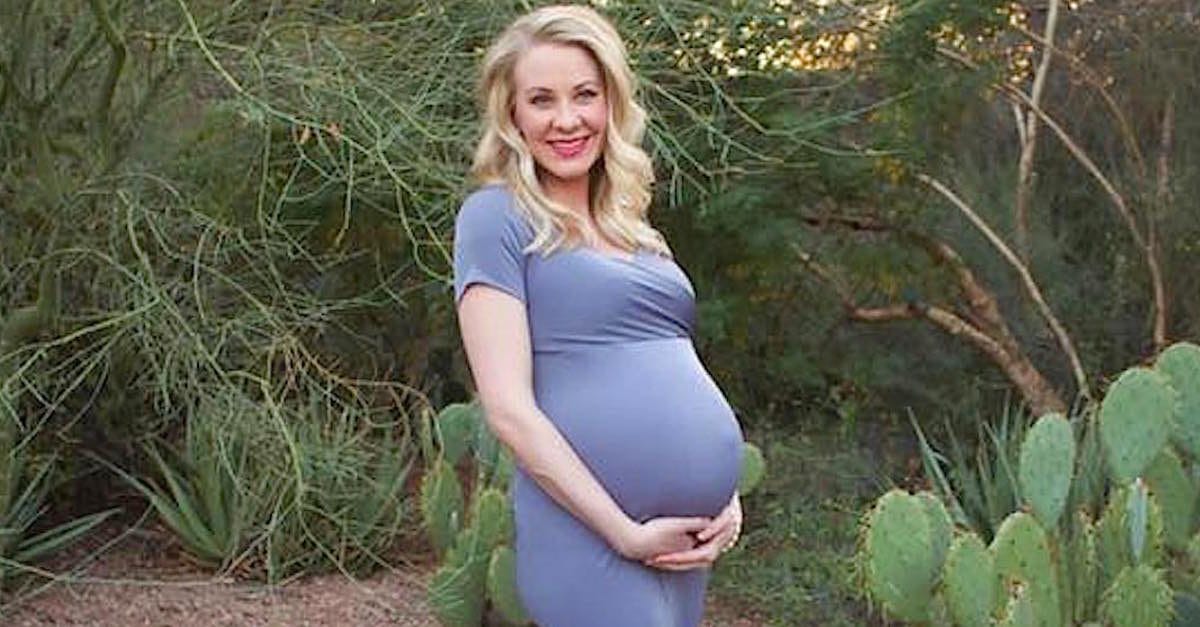by
BabyCenter Guest Blogger
posted in Products & Prizes
Being a parent is hard. Being an exhausted parent is impossible. When faced with new infant safe sleep recommendations from the American Academy of Pediatrics (AAP), many parents want to run for the hills. I am met with wails of “What do I do?!?!” “How?!?!” and “What the hell?!” It’s okay. Grab your (probably cold) coffee and settle in. I am a safe sleep expert. I’m here to help.
The AAP released its new safe sleep guidelines this past October. Every 5 years, a bunch of really smart doctors and scientists get together and review all the data around infant safe sleep. As an injury prevention expert, I nerd out over this data. Most of it is NSFP (not safe for parents) because it has a lot of numbers, charts, and (heartbreaking) pictures of infant sleep death. Not a pretty or fun topic, but I’ve committed most of my professional life to it anyway.

So, want to know what the AAP has to say in the newest safe sleep guidelines? Let’s find out.
1. Back to sleep. This one isn’t new. Pediatricians have been telling us for years that the safest position for new babies to sleep is flat on their back.

Once your baby starts rolling over easily from back to front, please do not stand over your baby all night long rolling her over from belly to back. Use that time to take a shower. Seriously. You may need it.
2. Breastfeed if you can, for as long as you can. Breastfeeding reduces the risk of Sudden Infant Death Syndrome (SIDS). But mamas, please don’t beat yourself up if you cannot or choose not to breastfeed. Nursed for three days? Yay! You nursed for three days!
3. Sleep in the same room as your baby for at least six months, ideally a year. Well, this one is depressing. Why does the AAP care? Because room sharing can reduce the risk of sleep death by as much as 50 percent. That’s huge. But for many families, one year isn’t practical. My room hardly has enough space for my bed, no way I’m fitting a full-size crib in there too.

This is where products like the Smitten Sleep System [which, full disclosure, I invented] or other small, safe portable bassinets come in super handy. Smitten has a smaller footprint than a Pack n’ Play or other travel crib, is lightweight and it is uber-portable. It is designed to last around 6 months, which is when SIDS deaths become less likely, even with bed sharing.
4. Safer bed sharing. What?! The AAP pulled a mic drop with this one. For as long as I can remember, the AAP has strongly advised against bed sharing. This has made for some pretty awkward convos in the pediatrician’s office, which usually go something like this-
Doc: “So, you’re not sleeping with the baby, right?”
You: “No, never. No way.” (Inside your head: “Don’t blink. She’ll know you’re lying. Don’t blink. Maintain eye contact.”)
The AAP is beginning to realize that exhausted, overwhelmed parents often make risky sleep choices — like allowing their babies to sleep on sofas, adult beds, car seats, swings, and other unsafe surfaces. The AAP is taking a huge stride forward in helping parents make safer sleep choices by acknowledging parents are actually doing it. At the same time, the AAP’s new stance encourages pediatricians to have open and non-judgmental conversations with parents. No more lying!

First, the bad news — there is no perfectly safe way to bed share. Just as there is no perfectly safe way to eat a pint of chocolate ice cream every night (I know, right?).
Now, the good news — there are ways to make bed-sharing safer.
The most important thing is to plan ahead. We all think we won’t sleep with our baby. But it will happen. When you are making a plan, here are some things to consider:
Get help if you smoke. Babies who live in a home with smokers, even if they do not smoke around the baby, are at a much higher risk of SIDS than a baby who lives in a home with no smokers.
Bed-sharing is riskiest in babies under 4 months of age. Be especially vigilant until your baby reaches 4 months.
Your bed needs to be as bare as possible. Your baby needs her own sleep space. Ideally this is a space not shared with others. However, if you choose to bring your baby into bed with you, the AAP recommends pillows, blankets, sheets, and any other soft bedding be kept away from your baby. So mama, you may need those unicorn-footed jammies to stay warm. Worried about your baby getting cold? Use a wearable blanket or sleep sack. Dress your baby according to the season — in the winter, you may dress your baby in thick jammies and a sleep sack. Shazam: a toasty little nugget.

Only bed-share with one parent at a time. Keep family snuggle time for when everyone is awake and alert.
Sleep on a firm mattress. Sorry, 1985 called and wants its water bed back. But really, soft bedding has been implicated in the deaths of thousands of infants. If you have a super fluffy pillow-top mattress, find another alternative.
Choose a bed over a couch or chair. Studies show bed-sharing is riskiest if you sleep on the sofa or in a recliner. If you think you might fall asleep while feeding your baby, feed the baby in bed. And if you do fall asleep with your baby in your bed, move baby to her own sleep space as soon as you wake up.
Don’t take medicines or drugs that make you sleepy before you bed-share. I really shouldn’t have to say this, but I will.
Avoid alcohol before bed-sharing. As much as I love sinking into bed with a good book, a glass of wine, and a baby on my boob, it isn’t the best decision. For those nights you plan to drink, keep baby close but not in bed with you if you can help it.
So to recap: keep your baby close (in a Smitten or other portable bassinet if need be), breastfeed as long as you can (even once!), keep all bedding away from baby, no medications/drugs/alcohol while bed sharing. And most importantly: Enjoy your sweet baby when you can. You will be tired (an understatement), you will be dirty, you won’t change your clothes for days. But you are a good mama/daddy nonetheless, and you’re doing your best.
 Amber Kroeker, MPH, is a pediatric injury prevention specialist with a focus on infant safe sleep. She works as a Child Injury Prevention Program Coordinator at Randall Children’s Hospital in Portland, Oregon. Amber is also the inventor of the Smitten Sleep System, a next-generation infant bassinet box specifically designed to reduce the risk of infant sleep death. Smitten is available through Amber’s company, Pip & Grow.
Amber Kroeker, MPH, is a pediatric injury prevention specialist with a focus on infant safe sleep. She works as a Child Injury Prevention Program Coordinator at Randall Children’s Hospital in Portland, Oregon. Amber is also the inventor of the Smitten Sleep System, a next-generation infant bassinet box specifically designed to reduce the risk of infant sleep death. Smitten is available through Amber’s company, Pip & Grow.
The post Making safe sleep work at your house, even at 3 a.m. appeared first on BabyCenter Blog.






 Amber Kroeker, MPH, is a pediatric injury prevention specialist with a focus on infant safe sleep. She works as a Child Injury Prevention Program Coordinator at Randall Children’s Hospital in Portland, Oregon. Amber is also the inventor of the
Amber Kroeker, MPH, is a pediatric injury prevention specialist with a focus on infant safe sleep. She works as a Child Injury Prevention Program Coordinator at Randall Children’s Hospital in Portland, Oregon. Amber is also the inventor of the 











You must be logged in to post a comment Login